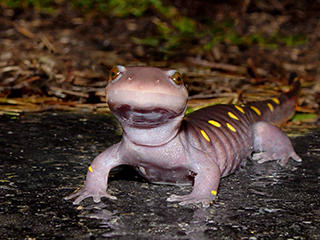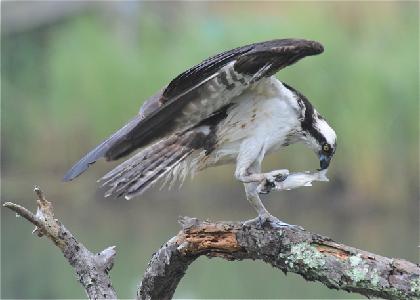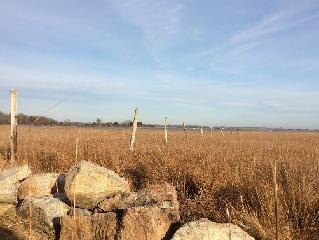|
Get Outside & Explore With Us!
Snowshoeing the Shoreline
January 28
February 11 & 26
Junior Bird Club: Building Bluebird Boxes
February 21
Wild, Wild Woodcock Walks
March 11, 17, & 24
What About Frogs, Salamanders, Snakes, & Toads?
There's Herpetology Field School at Stone Barn Farm!

© Suzanne Niles
We're excited to be offering Herpetology Field Exploration—the first session of our new Let's Go! Field School Series—on Saturday, May 6, at Stone Barn Farm.
During this full-day program, you'll explore our vernal pool, wetland, and woodland environments with experts from Allens Pond and Long Pasture. You'll also meet some live animals and learn more about their specific life cycles and habitat needs with program partners from Bristol County Agricultural High School.
Space is limited to 15 adults.
Learn more & register >
Duck Derby Turns 14 This Year!
The 2017 Duck Derby will take place on Saturday, August 12.
The race will start at 10am, followed by an 11am Duck Derby Festival with amazing $5 BBQ, silent auction, plant auction, live music, and winner announcements!
Ducks are already being adopted online and entered into this year's race. Get yours now!
Maybe 2017 is your year to win the grand prize of dinner for two anywhere in the world with round-trip airfare and two nights' lodging!
Contact Us
1280 Horseneck Road
Westport, MA 02790
Questions?
Please call the sanctuary at 508-636-2437 or email us.
|
Late January 2017
Osprey—Amazing Migrants, Stunning Birds

© Heather Fone
Westport, Massachusetts is home to one of the more significant breeding populations of osprey in North America. Since 2004, Allens Pond Wildlife Sanctuary, with the essential support of volunteers and partner organizations, annually monitors the breeding activity of 80 pairs of osprey on nearly 100 nesting platforms in Westport and Dartmouth, MA. These platforms were installed beginning around 1965 by two local residents, Gil and Jo Fernandez, and willing property owners and osprey friends.
As top-predators (fish-eaters) in salt-marsh estuaries and nearby bay waters, ospreys are an important barometer of change in our coastal environment. Ospreys also hunt in freshwater streams and ponds, particularly during the herring run season when they pick them out of fish ladders. Healthy, productive ospreys reflect healthy, productive fisheries, which in turn mean productive estuaries and bay waters.
Given that the Westport River/Allens Pond landscape is a state-designated Important Bird Area in Massachusetts partly because of the significance of these raptors on the landscape, monitoring their success is a way to be good stewards of this natural resource.
From April thru mid-July, nests are checked by staff and trained volunteers every few weeks to document success or failure at each stage of breeding—residency, incubation, hatch, and fledge.
It's the perfect time to join us on June 24 for the second session of our new Let's Go! Field School Series: Osprey Field Exploration. This all-day program will immerse you in the world of the osprey and allow you to view platforms up close in the field with experts with guided walks along the marsh.
Space is limited to 15 adults.
Learn more & register >
Why Are These Posts Here?

A line of old cedar fence posts marks the boundary of a grazing pasture along the
saltmarsh at Allens Pond Wildlife Sanctuary. The posts are a reminder that this land was once dominated by an agricultural lifestyle, and just how important the saltmarsh was to generations before us.
In the photo shown here this fence likely kept grazing animals out of the apple orchard just north and on the upland of the marsh. And yes, grazing animals were allowed to
forage all the way into the marsh.
In the late 19th century, saltmarsh hay was a vital crop for local residents as it was utilized for forage, bedding for animals and is still utilized for mulch in gardens. Hay was cut by hand using a scythe. It required the strength of two strong men armed with a double-sided hay rake for making a large pile upon the marsh to harvest later. Farmers often were forced to wait until the marsh was frozen in order to bring hay back to the farm. A wagon fitted with two oxen wearing marsh-shoes was ideal for the job. Today only a handful of farmers along the
Atlantic Coast take advantage of this natural crop. In Massachusetts the harvesting of saltmarsh hay occurs after bird nesting season on the Great Marsh including parts of Rough Meadows Wildlife Sanctuary in Rowley Mass and land adjacent to Joppa Flats on the North Shore.
|
